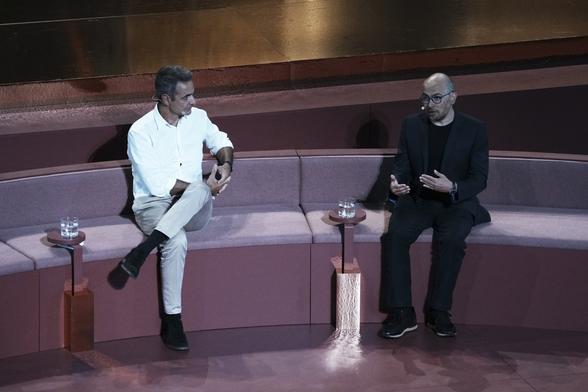
Google's top AI scientist says 'learning how to learn' will be next generation's most needed skill
A top Google scientist and 2024 Nobel laureate said Friday that the most important skill for the next generation will be "learning how to learn" to keep pace with change as Artificial Intelligence transforms education and the workplace.

Google's top AI scientist says 'learning how to learn' will be next generation's most needed skill
A top Google scientist and 2024 Nobel laureate said Friday that the most important skill for the next generation will be "learning how to learn" to keep pace with change as Artificial Intelligence transforms education and the workplace.

Robots can now learn to use tools—just by watching us
Despite decades of progress, most robots are still programmed for specific, repetitive tasks. They struggle with the unexpected and can't adapt to new situations without painstaking reprogramming. But what if they could learn to use tools as naturally as a child does by watching videos?

Stainless steel strengthened: Twisting technique creates submicron 'anti-crash wall'
A combined team of metallurgists, materials scientists and engineers from the Chinese Academy of Sciences, Shandong University and the Georgia Institute of Technology has developed a way to make stainless steel more resistant to metal fatigue. In their study published in the journal Science, the group developed a new twisting technique that functions as an "anti-crash wall" in the steel, giving it much more strength and resistance to cyclic creep.
i wonder if anyone wants to hire technical writers these days given that LLMs are mostly the talk now.
#technicalwriting #TechnicalWriters #information_technology #softwaredevelopment #llm #Documentation

Waste-based perovskite solar cell achieves 21.39% energy efficiency
A team of materials scientists and solar engineers at Nanyang Technological University in Singapore, working with a colleague from Polytechnique Hauts-de-France, has developed a perovskite solar cell using a biomass-based polymer. In their paper published in the journal Advanced Functional Materials, the group describes how they used agricultural waste to make the photoactive layer of the cell, and in so doing, found that it was still energy efficient.

Lithium-sulfur battery retains 80% charge capacity after 25,000 cycles
An international team of engineers and materials scientists has developed a lithium-sulfur battery capable of retaining 80% of its charge capacity after 25,000 cycles. Their paper is published in the journal Nature.

Carbon capture more costly than switching to renewables, researchers find
For most countries around the world, sourcing energy entirely from wind, solar, geothermal, and hydropower by 2050 would reduce their energy needs and costs, improve air quality, and help slow climate change, according to a study in Environmental Science & Technology.

Plastic crystals could replace greenhouse gases used in refrigerators
A team of chemical engineers at Deakin University, working with colleagues from the University of Western Australia, the University of Sydney and Monash University, all in Australia, has found that a type of plastic crystal can be used as a refrigerant, possibly replacing the greenhouse gas currently used in most refrigerators.

New haptic patch transmits complexity of touch to the skin
A Northwestern University-led team of engineers has developed a new type of wearable device that stimulates the skin to deliver various complex sensations.

 Hacker News
Hacker News